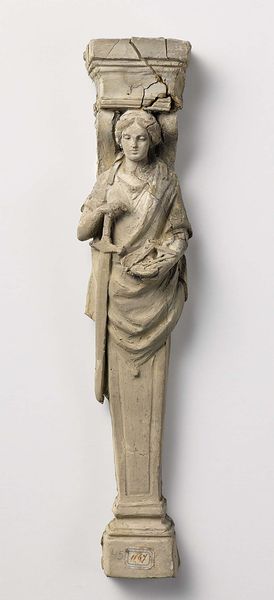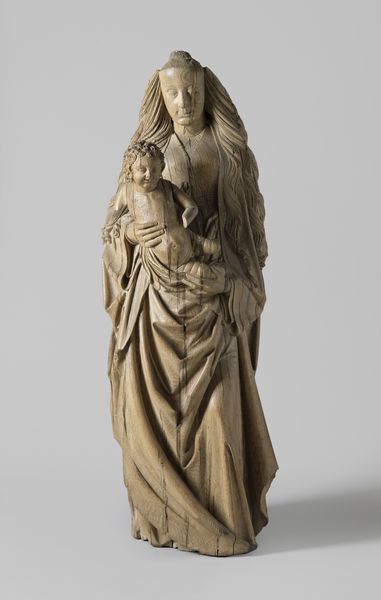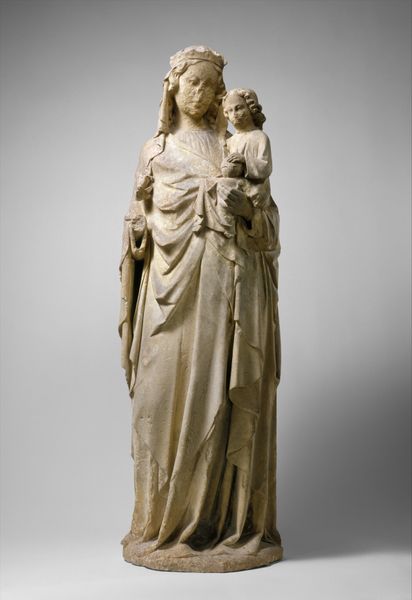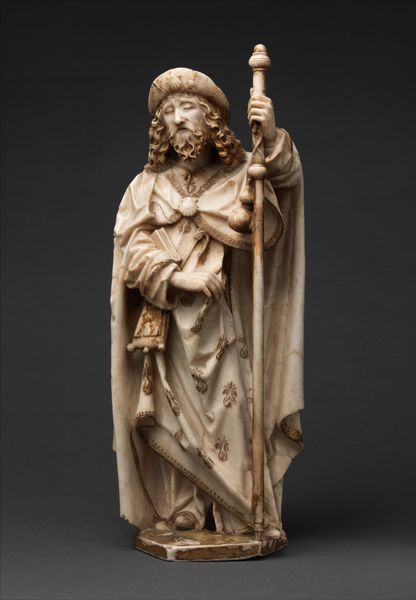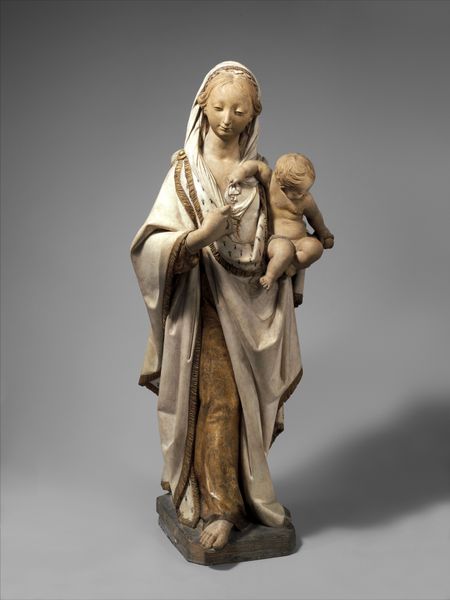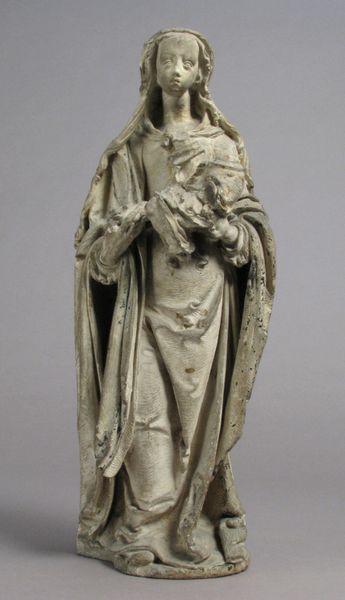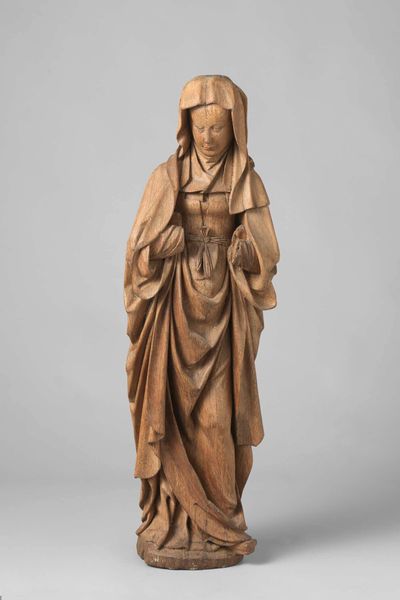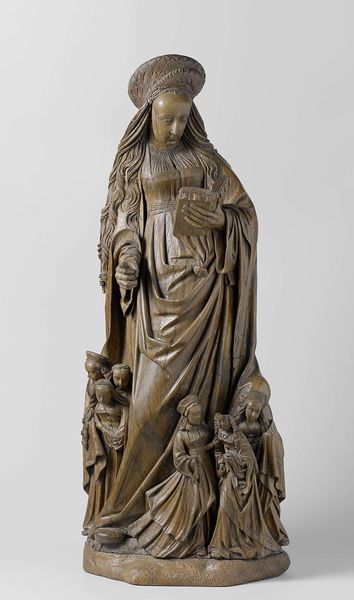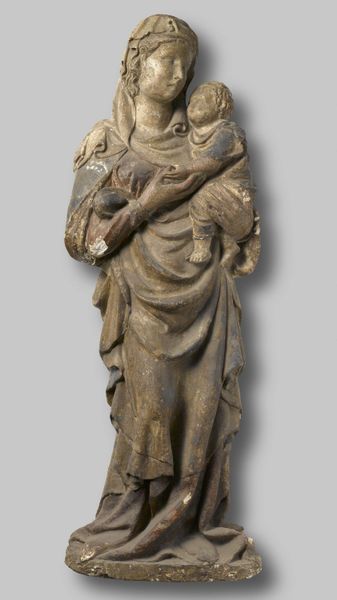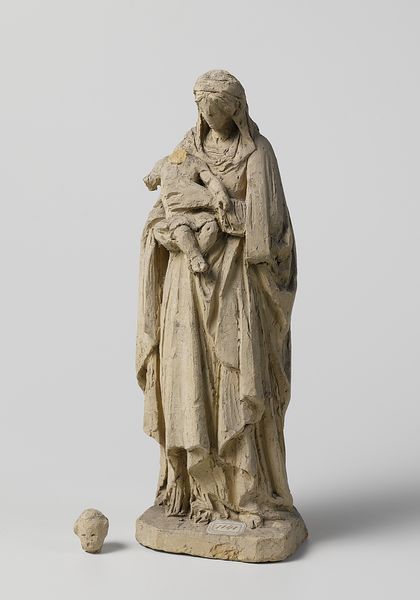
carving, sculpture, wood
#
portrait
#
medieval
#
carving
#
sculpture
#
figuration
#
sculpture
#
wood
#
northern-renaissance
#
statue
Copyright: Rijks Museum: Open Domain
Lodewijk van Bodeghem carved this ‘Virgin and Child’ from white alabaster sometime between the late 15th and early 16th centuries, likely in the Netherlands. As sacred imagery, it functioned as a devotional object. But we can also consider it as a material object shaped by cultural and institutional forces. The serene facial expressions and soft drapery are typical of the period. But it's the choice of alabaster that speaks volumes. Alabaster was a luxury material, often imported, making the sculpture a status symbol. The commission probably came from a wealthy patron or religious institution, reflecting the economic power of the Church. The work embodies conservative values. Its style reflects the conventions of religious art at the time. The Virgin is presented as a symbol of purity and motherhood, reinforcing traditional gender roles. Understanding this sculpture requires research into the patronage system, trade routes, and religious practices of the time. Only then can we fully grasp its meaning within its original social and institutional context.
Comments
rijksmuseum about 2 years ago
⋮
The courtly manner of the Virgin and Child, the elegant style and the use of precious and translucent alabaster suggest that this statue was commissioned by Margaret of Austria or someone around her court. Margaret served as Regent of the Netherlands, based in Mechelen, on behalf of her father, Holy Roman Emperor Maximilian I.
Join the conversation
Join millions of artists and users on Artera today and experience the ultimate creative platform.
